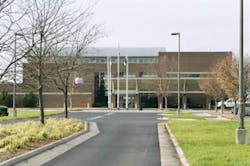The Emerging D.C. Reliever
MANASSAS, VA — This historic city some 30 miles west of downtown District of Columbia has been best known for the two Battles of Bull Run during the Civil War that took place here. As the growth of the D.C. metro region has moved west, Manassas has slowly been brought into the suburban fold. During the 1990s, the city began to position its airport, Manassas Regional, to capture some of the aviation growth. New tenants came on board, notably Colgan Air and a second fixed base operation. But then came 9/11, and the impact it had on the region’s airports may be best exemplified by Manassas, where director J.E. ‘Ron’ Rivera has seen the airport’s 20-year plan put on fast forward.
Says Rivera, “In a queer way, 9/11 put Manassas on the map. We couldn’t have paid for the amount of marketing that we got at that time. Dulles [International] was closed to Part 91 operations; [Washington Reagan] National was closed down period. We had jets parked everywhere.
“Our two FBOs did a great job. People saw the airport, it’s location. When it was all said and done, we were able to keep some of the people, ones who had never thought of coming to Manassas. I think Manassas would have eventually gotten to where it is today, but 9/11 expedited it. Our ten-year plan turned into a five-year plan, basically.”
And the growth hasn’t stopped. New tenants continue to come on board and more hangar construction is in the works. Interestingly, while aircraft operations on the airfield have remained fairly steady in the 130,000 range during Rivera’s six years here, the based businesses have increased as have based aircraft, which are now over 400. Of those, the notable growth has been in turbines, which now account for some 65 of the total.
Fuel volumes are also up. “Jet-A has been out the roof,” explains Rivera, “while avgas has been down.”
Most of the growth, including a new Manassas Regional terminal complex that houses airport administration and a museum, has been on the east side of the airfield. The west side continues to be dominated by traditional T-hangars and long-time FBO Dulles Aviation.
“In the next 18 months, if everything goes right, we’ll have two hangars under construction; two others pending. We will have constructed 13 corporate hangars in the past five years. That’s just amazing. I don’t know any other airport in this area that’s been building like we have,” says Rivera.
He relates that his greater challenges during this growth spurt have been maintaining the airfield, being able to staff accordingly, and to get the airport’s operating budget in the black.
Explains Rivera, “When I first got here we were depending on the general fund of the city. It’s a royal headache whenever you have to go to the city coffers for money. We turned the corner in 2003, and we’ve been able to stow away some earnings.”
Manassas Regional’s ops budget today is $1.2 million, he says, and last year it had a $200,000 surplus, which has been put into the capital development fund. Much of that money is targeted for matching grant monies, of which the airport pays two percent and the state pays three percent.
Rivera says that he continues to play catch-up with infrastructure and has been lobbying with FAA for more grant money. “We keep trying to convince FAA that Manassas needs about $6 million a year in grants to catch up. I inherited a lot of pavement sections that were in bad shape; I have an east apron that’s not in good shape. Those have put me behind on my runway extension.”
HNTB was recently hired to do the environmental assessment for the runway extension, which will be lengthened 500 feet to 6,200 feet. The airport is currently overseeing construction of a 42-unit T-hangar complex, valued at $2.9 million, which the city has backed through bond financing. “There’s a market there,” says Rivera, “we can make money.
“The site work is done; the buildings have gone out to bid twice. Both times it’s come in over budget; steel is outrageous; copper is outrageous; and concrete. Construction is just crazy right now with costs.”
Rivera says the FAA-operated tower is also in need of replacement. The current tower was inherited from Denver’s Centennial Airport years ago.
While Rivera and the airport are getting heavily into the T-hangar business, he says his primary focus looking ahead is on upgrading the airfield and attracting new businesses. The airport owns and oversees the fuel farm, but the FBOs and individual corporate tenants can put in their own tanks.
“Everybody is required to put their tanks in our farm,” explains Rivera. “But the airport is not in the fueling business and we don’t want to be. There’s no reason for us to do it. We have two good FBOs, NextFlight and Dulles Aviation.”
He says that many local owners have asked the airport to provide a self-fueling station, but again he defers to the tenant FBOs and says it’s their call.
